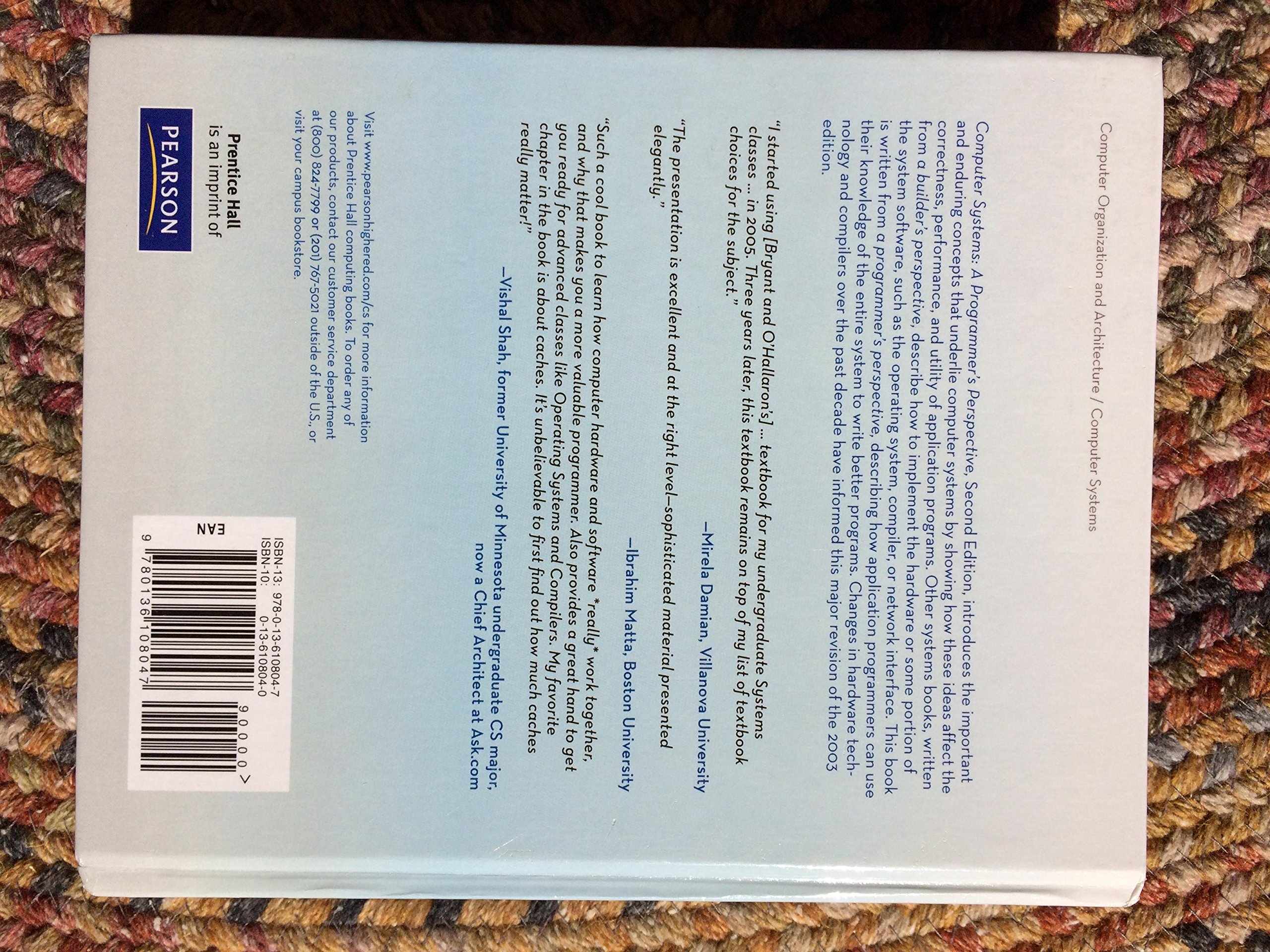



Computer Systems: A Programmer's Perspective
J**L
Very useful
I greatly recommend for anyone who is interested in the subject.
D**H
Five Stars
Excellent service, great book for teaching
J**I
A good introduction to a lot of topics
I've finished reading this book cover to cover after about 4 months and found the first few chapters (number representation, Assembly and processor architecture) cover materials in more depth compared to later chapters (e.g Unix signalling, network programming and concurrent programming). I suppose it's reasonable to only 'scratch the surface' on these more advanced topics, since in depth discussions would require a book of much larger volume (likely multiple books). In the bibliography at the end of each chapter, the authors provide a list of suggested readings for more comprehensive study on the main topics covered in that chapter. Overall, I think this is a great option for textbook that could be used for a typical sophomore level computer organization class, while also provides introduction to more advanced topics that are usually taught in upper year classes.
W**I
One of the best book I have read in my life
I took this 15213 course at Carnegie Mellon University last year. This book was one of the required reading material, (the other one was "C Programming Language"). We were lucky enough to have Randal E. Bryant and David R. O'Hallaron as instructors that semester.The book covers almost every fundamental concepts in OS. It does contain a significant amount of information, but the way it's written does not confuse readers nor make them sleepy as some brick textbooks do. Actually it is pretty well written and organized so readers can follow through without much trouble (might need clarification and guidance once in a while). The practice questions after each chapter is excellent material to get a favor of how each little piece works. Lab assignments from the book aim to help readers assembly these pieces into a whole. Labs do require certain degree of time and effort, especially for beginners.Lectures from two authors went extremely well with the book too. I am still feeling glad today that I took the course, which lead me to this book and two excellent instructors.
L**S
Testo superlativo
"Computer Systems: A Programmer's Perspective" è uno dei testi più interessanti che abbia mai acquistato nel corso della mia carriera da informatico. Spiega nel dettaglio come lavora un calcolatore, fornendo solide basi per programmare a basso livello. E' un mix tra un testo di "Sistemi Operativi", "Calcolatori elettronici", "Assembly" e "System programming". Gli esercizi/esempi peraltro sono brillanti e talvolta intriganti. Testo favoloso. E' molto costoso certo, circa 100 euro, ma a parer mio li vale tutti.Il testo in oggetto, la seconda edizione, si concentra sullo studio della programmazione dei sistemi Unix su architettura x86 32 bit (IA-32).
M**R
A one stop?
Can I say its a one-stop to learn a lot about a computing system as a software engineer. The content is detailed. I find a lot of books these days which are very opinionated - xx is s*** because it is so obvious (now!) that it would not be able to do yy etc. but no real insight as to what may have been the case when the implementation was being done. This book, much to my surprise and liking, stays away from that. It does a good job of explaining the nitty-gritties of why/what logic drove a certain design and how it all fits in place. All of the chapters have several ah-ha! facts which is bound to keep one interested in reading it to completion. There are a good number of solved and unsolved (assignment) questions throughout and at the end of a chapter which are very interesting as well. Altogether this is a book that is highly recommended for a software engineer who is trying to add system design skills to their skill set.PS: The book requires a fair bit of Linux knowledge.
Trustpilot
2 weeks ago
1 week ago